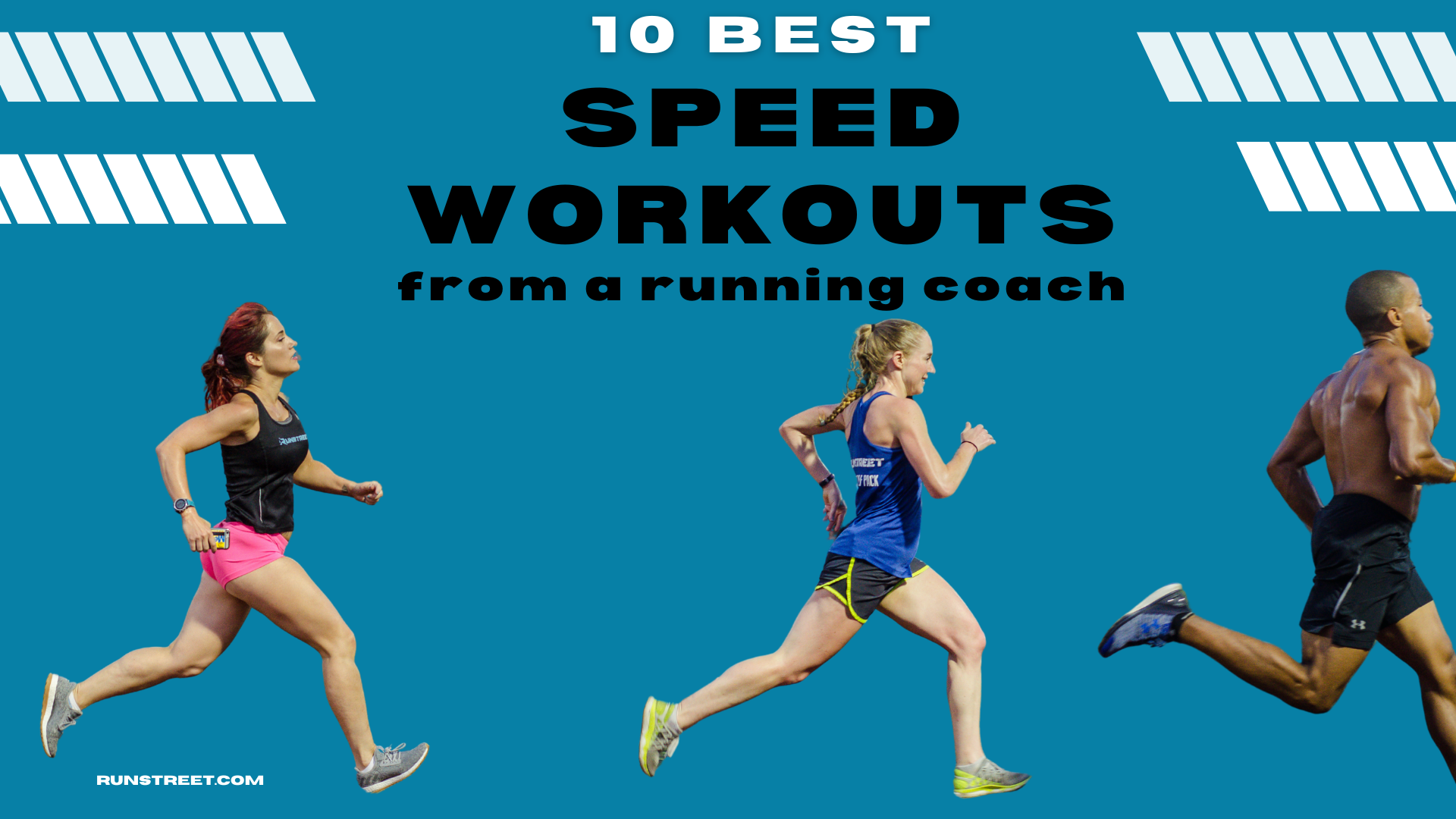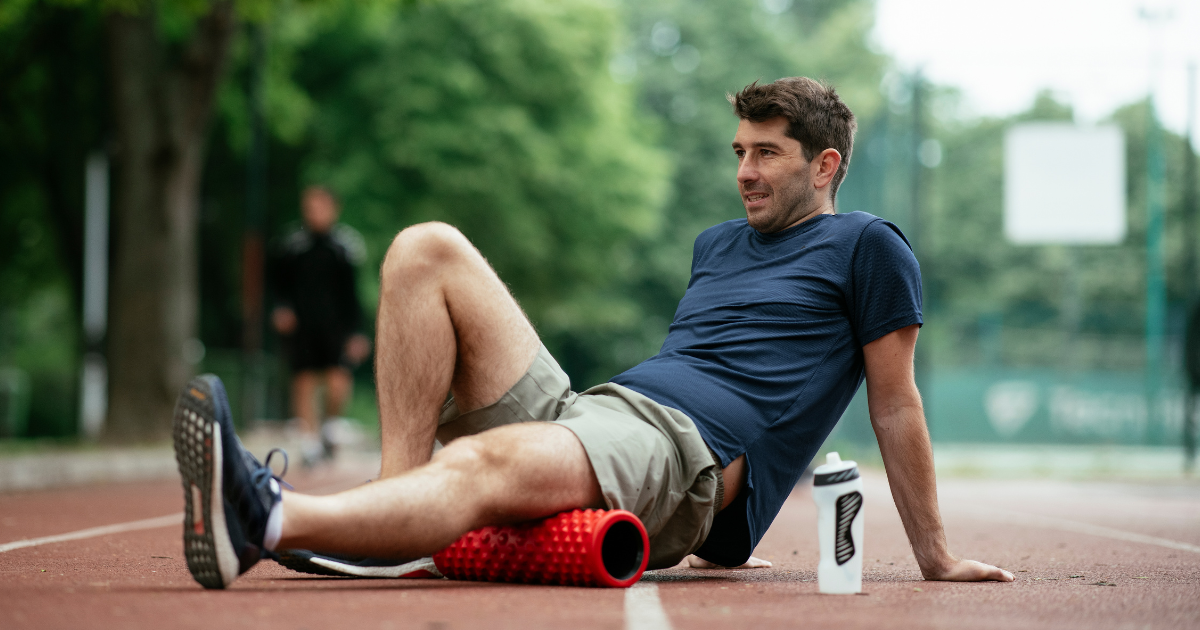10 Benefits of Foam Rolling + How to Do It
Foam rolling offers many benefits.
By Marnie Kunz, NASM-certified personal trainer,
USATF- RRCA-certified running coach
There are many benefits of foam rolling, which is a popular self-massage technique. Foam rolling can help alleviate muscle soreness and improve flexibility. For runners, foam rolling helps loosen up tight muscles and can help with muscle healing and injury prevention. As a trainer, my NASM certification program included foam rolling techniques to help people warm up and improve their range of motion before workouts. Foam rolling can also help prevent delayed onset muscle soreness after a workout. This guide will go over the benefits of foam rolling as well as offer tips on how to foam roll.
Related Post: Best Dynamic Stretches for Runners
What Is Foam Rolling?
Foam rolling is a self-massage technique that uses a foam tube to apply pressure to your muscles and joints, releasing tension. Foam rollers use a self-myofascial release (SMR) technique. According to the National Academy of Sports Medicine, SMR focuses on the neural and fascial systems in the body that can be negatively influenced by poor posture, repetitive motions, or dysfunctional movements.
Foam rollers can break up muscle knots and tension and restore function to areas of your body that are sore or injured.
Foam rollers come in different sizes and densities. There are smooth rollers and rollers with bumps that apply extra pressure. You can use foam rollers in a variety of areas, ranging from your quads and calves to your spine, upper back, and lower back.
10 Benefits of Foam Rolling
These are some of the most significant benefits of foam rolling:
1. Better Circulation
Using a foam roller increases blood flow to your muscles. According to experts, blood flow is crucial for muscle recovery. Improved blood flow boosts your muscle recovery, as it helps carry away waste from your muscles and delivers fresh blood and oxygen to your tissues.
2. Decreased Inflammation
Foam rolling can help you move more easily.
One of the significant benefits of foam rolling is reduced inflammation in your muscles. According to researchers, foam rolling produces an increase in anti-inflammatory proteins and a reduction of pro-inflammatory proteins. This means you’ll experience a decrease in inflammation.
Related Post: 20 Best Anti-Inflammatory Foods for Better Health
3. Improved Range of Motion
Foam rolling boosts joint range of motion. Using a foam roller on areas where you have knots or tight muscles helps to relieve the tension, allowing a better range of motion. Foam rolling helps elongate and relax the muscles, improving mobility.
However, it is best to focus on muscles when you foam roll, which will help your connected joints. Do not foam roll directly on joints like your ankles or knees, but instead on tight muscles that connect to them.
Foam rolling improves muscle recovery.
4. Reduced Muscle Soreness
Foam rolling eases muscle stiffness and tightness. Using a foam roller on muscles after a workout has been proven to reduce muscle soreness in scientific studies, reducing delayed onset muscle soreness (DOMS).
5. Injury Prevention
According to researchers, preventive and regenerative foam rolling effectively decreases fatigue-related impairment in muscle function. This means that using a foam roller can help restore muscle strength and elasticity after workouts, reducing injury risks.
Often, athletes experience tightness and impaired muscle movement after repetitive motions. Impaired muscle function leads to muscle imbalances and can also lead to injuries. Foam rolling can help restore regular muscle function and increase the range of motion of your joints.
6. Promotes Relaxation
Regular foam rolling helps lengthen muscles, releasing tension. Foam rolling trigger points sends a signal to neural receptors, which helps muscles relax.
7. Boosts Muscle Recovery
Foam rolling improves muscle recovery from workouts. It is especially helpful after an intense training day, such as a speed workout, long run, or weightlifting session with new exercises or heavier weights.
Related Post: 5 Running Workouts to Get Faster
8. Helps Correct Muscle Imbalances
Following a regular foam rolling routine can help correct muscle imbalances. People often develop muscle imbalances from altered movement patterns due to tight, sore muscles with a limited range of motion.
Foam rolling improves your range of motion and helps ease tension in your fascia (the connective tissue that surrounds everything in your body). Self-myofascial release decreases adhesions (also called knots) and restores muscle functioning, helping return muscles to a healthier state.
9. Improved Neuromuscular Efficiency
Neural receptors are responsible for causing a stretch reflex that contracts or relaxes muscles. Foam rolling changes the muscle tension, which can impede the neural receptors that cause muscles to tighten. This effect on your nervous system helps relax your muscles.
According to the National Academy of Sports Medicine, when the pressure of the body against the foam roller is sustained on a trigger point, the Golgi tendon organs (a type of neural receptors) will “turn off” the muscle spindle activity, allowing the muscle fibers to stretch, unknot, and realign.
10. Decreases Effects of Stress on the Body
Foam rolling can help combat stress and tension in your body.
Another one of the benefits of foam rolling is reducing the effects of stress on your body. Foam rolling helps decrease muscle inflammation and tension, promoting more relaxation and lengthening of muscles in your body. Using a foam roller can help ease muscle tension and knots after workouts and injuries.
Getting Started with Foam Rolling
You can foam roll at home or at the gym. All you need are some exercise mats and a foam roller. There are different types of foam rollers. The type of roller you use depends on your personal preferences and space. If you’re seeing a physical therapist, you can ask for recommendations on the best foam rollers for your situation.
Most gyms have foam rollers, but some athletes, like marathon runners, prefer to have one at home for convenience. The gym is a great place to test out foam rollers and find one that works for you. Beginners usually prefer softer foam rollers, while athletes who are training heavily, such as marathon runners, usually opt for firmer foam rollers.
When to Foam Roll
Most people foam roll before or after a workout. Use a foam roller before exercising to warm up and improve your range of motion. Foam rolling is a great first step to warm up before doing dynamic stretches.
If you have muscle soreness, foam rolling after a workout can be a great tool to help relieve tension. Using a foam roller after a workout can speed up your recovery time and prevent delayed onset muscle soreness.
Who Can Foam Roll
Before you foam roll, identify the areas where you have sore muscles to target. Also, make sure you are cleared to foam roll and do not have any torn muscles, organ failure, bleeding disorders, or contagious skin conditions. Consult your doctor or physical therapist if you’re not sure about foam rolling.
How to Foam Roll
Place the foam roller under the muscle you want to target. (Do not roll directly on joints like your knees or ankles).
Slowly lower your body onto the foam roller until you feel some applied pressure but not sharp pain.
Hold your position for 30 seconds.
To add intensity, you can slowly roll back and forth over the foam roller, allowing it to stimulate your tight muscles.
Stop and hold your position for a deeper release when you’re foam rolling.
If you feel sharp pain or intense discomfort, you can ease up on the roller to apply less pressure. Foam rolling can be uncomfortable but shouldn’t be extremely painful. If you feel pain, listen to your body and stop rolling.
Common Areas to Foam Roll
Some common muscles to foam roll include:
Calves (the back of your lower legs)
Quadriceps (upper front of legs)
Hamstrings (upper back legs)
Upper back
Glutes
Iliotibial (IT) Band
Hip adductors
Risks of Foam Rolling
Foam rolling is safe for most people and circumstances, but there are some exceptions. Foam rolling on joints can cause people to overextend their joints, so focus on rolling muscles, not joints. Also, people with broken bones or torn muscles should consult a doctor before foam rolling.
If you have congenital heart failure, organ failure, bleeding disorders, or contagious skin conditions, consult your doctor before using a foam roller. If you’re not sure how to foam roll or need guidance, ask a personal trainer or physical therapist for help.
Have you tried foam rolling? Tag @Runstreet on Instagram in your workout posts to share and get cheered on.
Need a training plan to help you step up your fitness or running game? Head to the Runstreet Training Center for personalized running and fitness plans and free workouts.
Related Posts: 10 Best Hip Stretches for Runners, 6 Best Stretches for Hamstrings from a Trainer, 20 Tips for Better Workout Recovery
Marnie Kunz is a NASM-certified trainer and USATF- and RRCA-certified running coach based in Brooklyn, NY. Marnie likes helping people get and stay active to enjoy a better quality of life. When she’s not doing fitness things, Marnie enjoys exploring with her dog, a mischievous rescue Akita.





